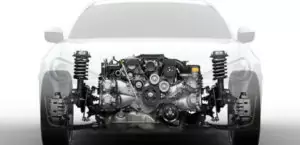The 1.6-liter Volkswagen 1.6 APF engine was produced by the company only from 1999 to 2000 and was installed on the VW Polo Classic, Golf, Bora or similar Seat Cordoba, Leon and Toledo. Such a unit has an electric throttle, a mass air flow sensor, an EPC system, an EGR valve and supports Euro 4.
The EA113-1.6 series includes: AEH, AHL, AKL, ALZ, ANA, APF, ARM, AVU, BFQ, BGU, BSE, BSF.
Specifications
| Production years | 1999-2000 |
| Displacement, cc | 1595 |
| Fuel system | injector |
| Power output, hp | 100 |
| Torque output, Nm | 145 |
| Cylinder block | aluminum R4 |
| Block head | aluminum 8v |
| Cylinder bore, mm | 81 |
| Piston stroke, mm | 77.4 |
| Compression ratio | 10.3 |
| Features | EGR, EPC |
| Hydraulic lifters | yes |
| Timing drive | belt |
| Phase regulator | no |
| Turbocharging | no |
| Recommended engine oil | 5W-40 (approval: VW 502 00 or VW 505 00) |
| Engine oil capacity, liter | 4.5 |
| Fuel type | petrol |
| Euro standards | EURO 4 |
| Fuel consumption, L/100 km (for VW Polo Classic 2000) — city — highway — combined |
10.9 6.0 7.6 |
| Engine lifespan, km | ~300 000 |
The engine was installed on:
- Audi A3 1 (8L) in 1999 – 2000;
- Seat Cordoba 1 (6K) in 1999 – 2000;
- Seat Ibiza 2 (6K) in 1999 – 2000;
- Seat Leon 1 (1M) in 1999 – 2000;
- Seat Toledo 2 (1M) in 1999 – 2000;
- Volkswagen Bora 1 (1J) in 1999 – 2000;
- Volkswagen Golf 4 (1J) in 1999 – 2000;
- Volkswagen Polo 3 Classic (6V) in 1999 – 2000.
Disadvantages of the VW APF engine
- This is a reliable motor with a high resource and breakdowns happen at high mileage.
- The reason for the drop in power is usually the fuel pump or fuel pressure regulator.
- The culprits of unstable operation are often air leaks or mass air flow sensor failures.
- The mechanism for changing the intake geometry is also distinguished by low reliability.
- Closer to 200,000 km, oil consumption often appears due to wear of rings and caps.






